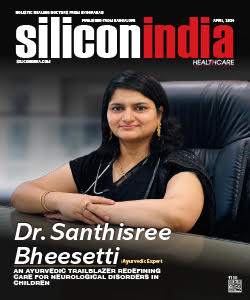Most Popular Photography Approaches in 2018
Regardless of whether you are an experienced photographer or just an amateur trying to get noticed, it is important to always keep up with the latest trends and new approaches in order to become or maintain relevant.
At the end of each year, stock photography companies predict photography styles that will be dominant in the following year, based on the data collected throughout the past year. Such reports serve not only to enable photographers to get some fresh new ideas, but also to help them pinpoint what they can do to draw more attention to their work.
That is why we have created this article that deals with photography approaches that will dominate 2018. If you want to be trendy and make an impact with your work, be sure to explore them closely!
1. Light painting
Light painting is a photography technique where a photo is created by moving lights and by using a slow shutter speed. It requires long exposure and it is most commonly done either at nighttime or in a darkened room.
Although you can use image processing programs such as Adobe PhotoShop, or opt for the free ones, to simulate light painting effects to some extent, they can never be fully achieved as when creating them with an actual camera. Nowadays, with advances in digital photography, light painting effects can be achieved with a digital camera also and they are even better compared to the ones made by old school film-based cameras.
Just be sure to adjust the exposure and color balance properly, and adapt the movement of lights to get a better composition.
2. Monochrome
If you are a monochrome enthusiast, thanks to digital technology, you can create great monochrome photos even easier than before. Subjects such as portraits or landscapes are the most suitable for this technique especially if you are still a beginner, so you should start with them.
You need to look for contrast, texture and shape to make your image stand out as there are no colors in it. First of all, you should look for scenes that have a tonal contrast and emphasized blacks and whites. This can be achieved by the brightness of the subjects and with the exposure settings.
Setting the exposure for some brighter areas will automatically make the shadows darker and the highlights will stand out more. Moreover, you can try long exposure as well, especially when it comes to moving clouds or water, or filters like graduated neutral density.
If you’re looking to explore this further, refer to GuruShots’ monochrome photography tips - a comprehensive guide.
3. Panoramic photography
Panoramic photography may refer to a wide format, a wide field of view, or a virtual tour. A photograph is considered to be panoramic if the ratio between its height and length is at least 1/2. This ratio can be even bigger, for instance 1/3 and it is the most common format for the majority of photographers.
When it comes to creating such photographs, overlapping is the most essential area. You can experiment with your camera until you reach a proper overlap, but most photographers suggest it should be 15% or more. Also, you need to keep your camera on the level, especially if you are shooting more than 10 images.
Furthermore, you need to look out for movement, as it may completely ruin your images and don’t use a lens that is too wide.
4. The long exposure approach
Long exposure can create stunning images. Nighttime long exposure can create great light effects and emphasize unexpected details, while daytime long exposure can make ethereal elements. When you want to achieve that, there are certain things to pay attention to.
For instance, you need to ensure that there is no vibration, so you can prevent it by using a tripod. The next step is to compose your image the right way and block light leaks if there are any. It is always advisable to use the rule of thirds upon creating such photos.
5. Macro photography
With the help of digital technology, you are now able to create amazing macro photographs without having to use specialized gear. When choosing the lens, you should opt for the ones between 50-150 mm. Then, you should add tubes for making a standard zoom focus even closer.
To achieve the best quality, you can add a diopter which will make your lens focus closer, and use apertures to adjust the depth of field. When positioning your subjects, it is recommended to use a “third hand” device as it will enable better positioning.
To conclude, if you want to create mesmerizing photographs that will reflect the latest trends in photography, you can achieve that easily by following our tips.



